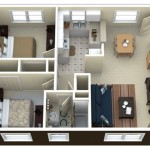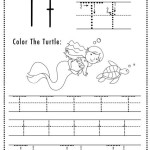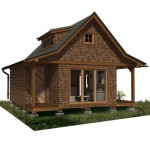How To Layer Rugs In The Bedroom: A Comprehensive Guide
Layering rugs in a bedroom can transform the space from simple and functional to a stylish and inviting sanctuary. This design technique adds depth, texture, and visual interest, allowing for creative expression and enhanced comfort underfoot. However, successfully layering rugs requires careful consideration of size, style, color, and texture. This article provides a detailed guide on how to effectively layer rugs in a bedroom, covering essential aspects to achieve a harmonious and aesthetically pleasing result.
Key Considerations Before You Begin
Before diving into the specifics of rug layering, it's crucial to assess the existing elements of the bedroom and define the desired outcome. This preliminary stage ensures that the rug layering complements the overall design and serves a practical purpose.
First, evaluate the size of the bedroom. A large room can handle multiple layers and larger rug sizes, while a smaller room may benefit from a more subtle approach with smaller rugs strategically placed. Overcrowding the space with too many rugs or rugs that are too large can make the room feel cramped and visually disorganized.
Next, consider the existing flooring. Hardwood floors, tile, or even low-pile carpets provide a suitable base for layering rugs. However, layering rugs on thick, plush carpets can be challenging and may not achieve the desired effect. It is also important to consider the colour and texture of the existing floor. A neutral floor covering allows more freedom with your rug choices, while a textured or boldly coloured floor may require a more subdued palette for the layered rugs.
Finally, analyze the existing furniture and décor. The style, color palette, and arrangement of furniture significantly impact the rug layering design. Consider the existing bedding, wall color, curtains, and artwork. The chosen rugs should complement these elements to create a cohesive and balanced aesthetic. Understanding the existing foundational elements enables a more informed approach to rug selection and placement.
Choosing the Right Rugs for Layering
Selecting the appropriate rugs is paramount to successful layering. This involves careful consideration of size, material, texture, pattern, and color to achieve a visually appealing and functional outcome. The foundation rug, often referred to as the base rug, and the accent rug, which is layered on top, serve different roles in the overall design.
The foundation rug typically covers a larger area and establishes the overall tone for the layered arrangement. Opt for a neutral color and a simple pattern, or a solid color, to create a versatile backdrop. Natural fiber rugs, such as jute or sisal, are excellent choices for foundation rugs due to their durability, neutral tones, and textural appeal. The size of the foundation rug should be large enough to anchor the main furniture pieces in the room, such as the bed and nightstands. A common rule of thumb is to ensure the rug extends at least 18-24 inches beyond the sides and foot of the bed.
The accent rug, layered on top of the foundation rug, serves as a focal point and adds visual interest. This rug is where you can incorporate bolder colors, intricate patterns, and luxurious textures. Consider materials like wool, silk, or faux fur for the accent rug, depending on the desired level of comfort and style. The size of the accent rug should be significantly smaller than the foundation rug to create a distinct layered effect. Common shapes for the accent rug include rectangular, circular, or animal hide shapes. The placement of the accent rug is also critical. It can be centered under the bed, partially covering a portion of the foundation rug, or placed asymmetrically to create a more dynamic look.
Furthermore, consider the pile height of the rugs. A thicker pile on the accent rug can add a sense of luxury and warmth, while a lower pile on the foundation rug ensures ease of movement and minimizes tripping hazards. Contrasting textures between the two rugs can also enhance the visual appeal. For example, pairing a smooth sisal foundation rug with a plush wool accent rug can create a tactile and visually engaging contrast.
When choosing patterns, ensure that they complement each other rather than clash. A subtle geometric pattern on the foundation rug can pair well with a bolder floral or abstract pattern on the accent rug. Alternatively, if the foundation rug has a busy pattern, opt for a solid color or a more subdued pattern for the accent rug to avoid overwhelming the space.
Techniques for Layering Rugs in a Bedroom
Several techniques can be employed to effectively layer rugs in a bedroom, each creating a different visual effect. The choice of technique depends on the size of the room, the style of the furniture, and the desired aesthetic.
One common technique involves placing the foundation rug under the entire bed, extending beyond the sides and foot of the bed. The accent rug is then placed on top, covering the central portion of the foundation rug. This technique creates a sense of balance and symmetry, making it ideal for more traditional bedroom designs. Ensure that the accent rug is positioned in a way that allows a significant portion of the foundation rug to be visible, showcasing both rugs.
Another technique is to partially cover the foundation rug with the accent rug, placing it asymmetrically to create a more modern and dynamic look. This technique is particularly effective for smaller bedrooms or rooms with minimalist furniture. The accent rug can be positioned to partially extend from under the bed, covering a portion of the floor on one side. This asymmetry adds visual interest and can help to define a specific area, such as a reading nook or a seating area.
Consider using multiple smaller rugs to create a layered effect. This technique is particularly useful in larger bedrooms where a single accent rug may not be sufficient to cover the desired area. Small circular or rectangular rugs can be layered strategically, creating a patchwork effect. This approach allows for greater flexibility in terms of color and pattern combinations, enabling a more personalized and eclectic design. However, it is important to maintain a sense of cohesion by ensuring that the rugs share a common color palette or design theme.
Another approach is to use a "rug sandwich" layering technique. This involves placing a smaller rug, such as a sheepskin or a decorative mat, between the foundation rug and other furniture, like a bench at the foot of the bed. This adds an extra layer of textural interest and highlights the furniture piece, drawing the eye and creating a focal point in the room. The colour and texture of this rug should complement both the furniture and the other rug layers for a harmonious aesthetic.
Finally, ensure the layering is practical. Secure rugs with rug pads to prevent slipping and bunching, especially in high-traffic areas. Rug pads also protect the flooring underneath and prolong the lifespan of the rugs by preventing wear and tear. Consider the placement of furniture and ensure that it is stable and level on the layered rugs. Regularly vacuum and clean the rugs to maintain their appearance and prevent the accumulation of dirt and debris.
Ultimately, successful rug layering hinges on understanding the interplay of size, color, texture, and placement. Experimentation and a keen eye for detail are key. These detailed considerations offer a framework for enhancing any bedroom with layered rugs.
Rug Layering 101 Rebecca Genevieve

Layering Rugs Like A Boss Showit Blog

6 Easy Ways To Master The Layered Rug Look
Rug Layering 101 Rebecca Genevieve

A Complete Beginner S Guide To Layering Rugs Layla Grayce
.jpg?strip=all)
Layering Rugs Using A Rug Pad Dream Green Diy
Rug Layering 101 Rebecca Genevieve

Layering Rugs 5 Tips For Your Bedroom Saatva

6 Easy Ways To Master The Layered Rug Look

51 Stylish Rug Layering Ideas Digsdigs








